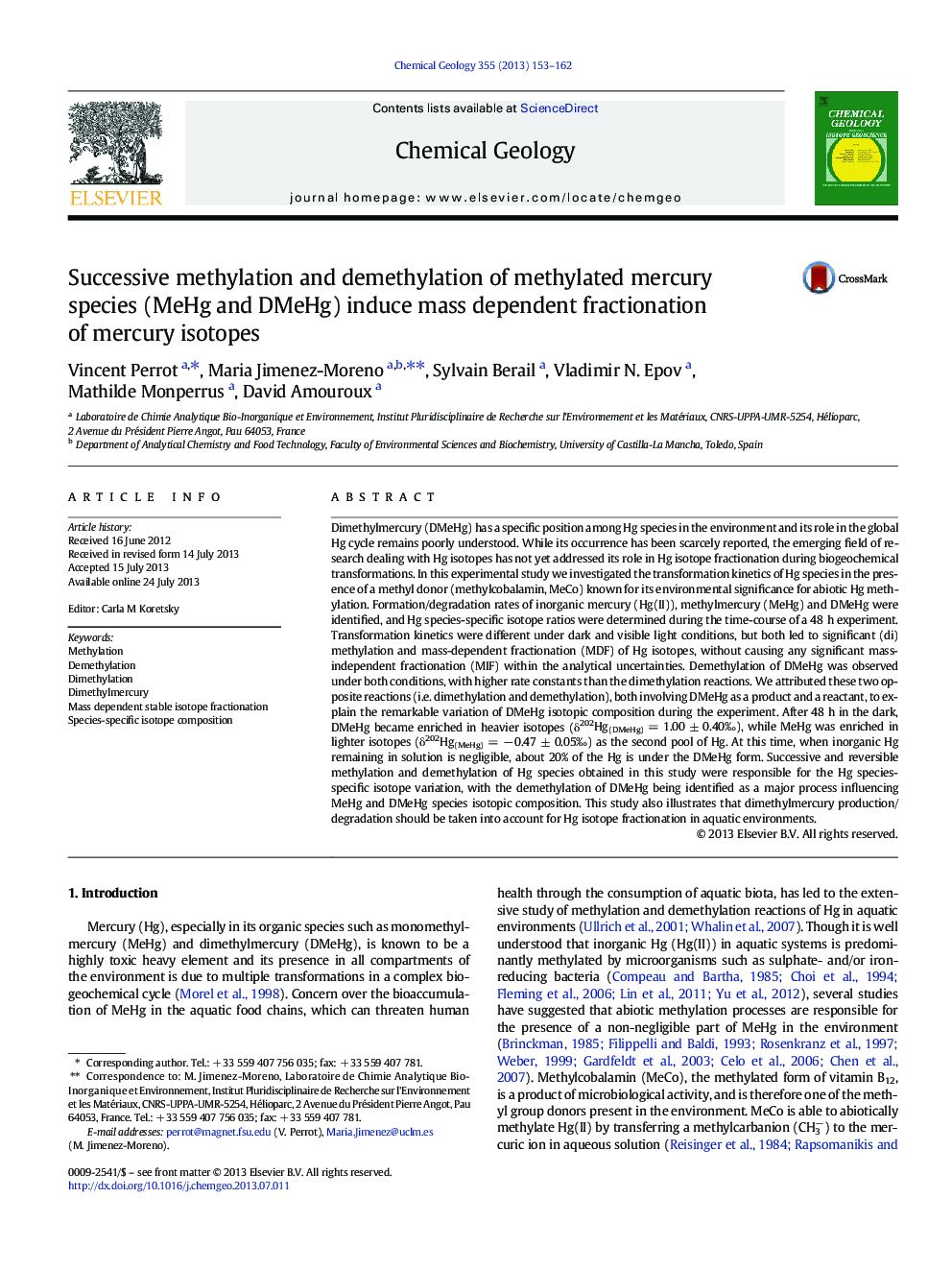| کد مقاله | کد نشریه | سال انتشار | مقاله انگلیسی | نسخه تمام متن |
|---|---|---|---|---|
| 6436799 | 1637614 | 2013 | 10 صفحه PDF | دانلود رایگان |

- Incubation of Hg(II) with methylcobalamin promotes successive and reversible methylation reactions.
- Significant amounts of methylmercury (MeHg) and dimethylmercury (DMeHg) are produced.
- Formation/degradation of DMeHg involves significant Hg mass-dependent fractionation.
- Hg isotope fractionation is enhanced during DMeHg demethylation.
- Hg isotopic composition in particular environments may reflect DMeHg formation/degradation.
Dimethylmercury (DMeHg) has a specific position among Hg species in the environment and its role in the global Hg cycle remains poorly understood. While its occurrence has been scarcely reported, the emerging field of research dealing with Hg isotopes has not yet addressed its role in Hg isotope fractionation during biogeochemical transformations. In this experimental study we investigated the transformation kinetics of Hg species in the presence of a methyl donor (methylcobalamin, MeCo) known for its environmental significance for abiotic Hg methylation. Formation/degradation rates of inorganic mercury (Hg(II)), methylmercury (MeHg) and DMeHg were identified, and Hg species-specific isotope ratios were determined during the time-course of a 48 h experiment. Transformation kinetics were different under dark and visible light conditions, but both led to significant (di)methylation and mass-dependent fractionation (MDF) of Hg isotopes, without causing any significant mass-independent fractionation (MIF) within the analytical uncertainties. Demethylation of DMeHg was observed under both conditions, with higher rate constants than the dimethylation reactions. We attributed these two opposite reactions (i.e. dimethylation and demethylation), both involving DMeHg as a product and a reactant, to explain the remarkable variation of DMeHg isotopic composition during the experiment. After 48 h in the dark, DMeHg became enriched in heavier isotopes (δ202Hg(DMeHg) = 1.00 ± 0.40â°), while MeHg was enriched in lighter isotopes (δ202Hg(MeHg) = â 0.47 ± 0.05â°) as the second pool of Hg. At this time, when inorganic Hg remaining in solution is negligible, about 20% of the Hg is under the DMeHg form. Successive and reversible methylation and demethylation of Hg species obtained in this study were responsible for the Hg species-specific isotope variation, with the demethylation of DMeHg being identified as a major process influencing MeHg and DMeHg species isotopic composition. This study also illustrates that dimethylmercury production/degradation should be taken into account for Hg isotope fractionation in aquatic environments.
Journal: Chemical Geology - Volume 355, 26 September 2013, Pages 153-162